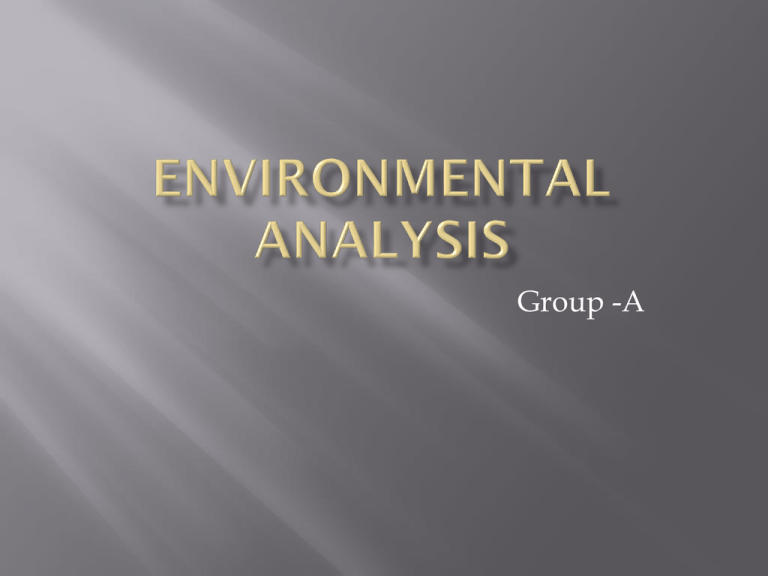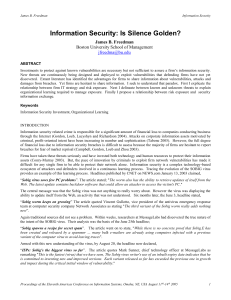nepalese business environment
advertisement

Group -A Sushil Gnawali Aashish Bhattarai Ramesh Bikram Thapa Milan Khatri Pawan Adhikari Nirajan Neupane Bibek Pahadi Business environment refers to all surrounding internal and external forces which influences the performance and outcome of business. Business environmental forces influences on the development & growth of business. Forces & conditions of environmental change overtime because of dynamic world & these changes brings opportunities & threat to Business. Internal environment provides strength & weakness to the business whereas external environment brings opportunities and threats. Hence it is very essential to analyze the business environment properly before & while operating business. Interaction of Business & its Surroundings Micro environment of business Macro environment of business Suppliers Supply raw materials and other components (for input) Importance Reliable supply – continuous supply for smooth functioning 1) 2) Customer Different categories of customers 1. Industrial customers 2. Wholesale customers 3. Retail customers 4. Government customers 5. Foreign customers 3. Market intermediaries 1. Middlemen 2. Physical distribution firms (warehouses and transport firms) 3. Marketing service agencies(Advertising agencies market research firms, media firms, consulting firms) 4. Financial intermediaries 4. Competitors 1. The Threat of entry of new firms 2. The Power of Buyers 3. The Power of Supplier 4. s The Power of Substitutes 5. The Intensity of Rivalry among existing firms Economic environment 1. Economic conditions- GDP, Business Cycle, Unemployment, Inflation, Balance of Payment, Fiscal Policy, Monetary Policy, Exchange rate Policy, Interest Rate 2. Economic policies Budget Industrial polic y Trade policy Agricultural policy 3. Economic system- Capitalistic, Socialistic, Mixed A. B. Political environment 1. Legislature - Labor Laws like Factories Act, EPF Act, ESI Act, Industrial Disputes Act, Minimum Wages Act, Payment of Wages Act, etc MRTP Act, Law of Contracts, Companies act, IDRA Act, FERA, Import & Export Control act, Tax laws 2. Executive- Administrators 3. Judiciary - District, High Courts, Supreme Court, International courts. C. Socio cultural environment 1. Attitude of people towards work and health. 2. Role of family. 3. Marriage. Religion. 4. Education 5. Ethical issues 6. Social responsibility of business D. Natural Environment 1. Natural resources. 2. Weather and climatic conditions 3. . Locational aspects. 4. Nearness to port facilities. E. Technological environment 1. Nature of technology 2. Scope for innovation F. International environment 1. Economic 2. Political 3. Legal 4. Demography 5. Technology F. International environment 1. Economic 2. Political 3. Legal 4. Demography 5. Technology 1. Strategy Formulation For continuity Provides basic inputs Identify competitive position 2. Competitive Analysis Provides market information Counter strategies Deep analysis of strength and weakness Regular monitoring Set “rule of the game” 3. Adaptability Make less harmful Adopt prevailing conditions 4.Stability Foresee the impact of environmental forces. Analysis of national & international scenario. Political force Energy- land/building Slow growth in economy Social change Labour market Globalization trend Extrapolation method forecasting ,trends analysis ,regression analysis Historical analysis studied different areas Intuitive reasoning “best guess” by avoiding personal biasness Scenario building time oriented sequences of events that have cause effect relationship. Model building simulation of mathematical & econometric model Network method Contingency tree (graphical display of trends) & relevance tree(logical network assigning degree of importance) Survey Experts , customers and others Delphi techniques: collection of experts opinion systematically. 1. Strategic Management: It is concerned with analytical and complex representation of organizational environment It involves decisions and actions by top level It focuses on long term objectives It is a means to achieve goal Radical change due to IT sector development Globalization Major change in political economical spheres (integration of world economy due to WTO, regional agreement) Liberalization of economy in third world . Social change (life styles, consumerism , environmental inferences) International alliances Education Economic slow down in many countries. 1. 2. 3. 4. 5. 6. 7. Goal formation Identification of opportunities and threats Identification of strength and weakness Formulation of strategies by matching opportunities and strength. Avoidance of weakness and threats Development of strategic option Correction and reformulation of strategies.










